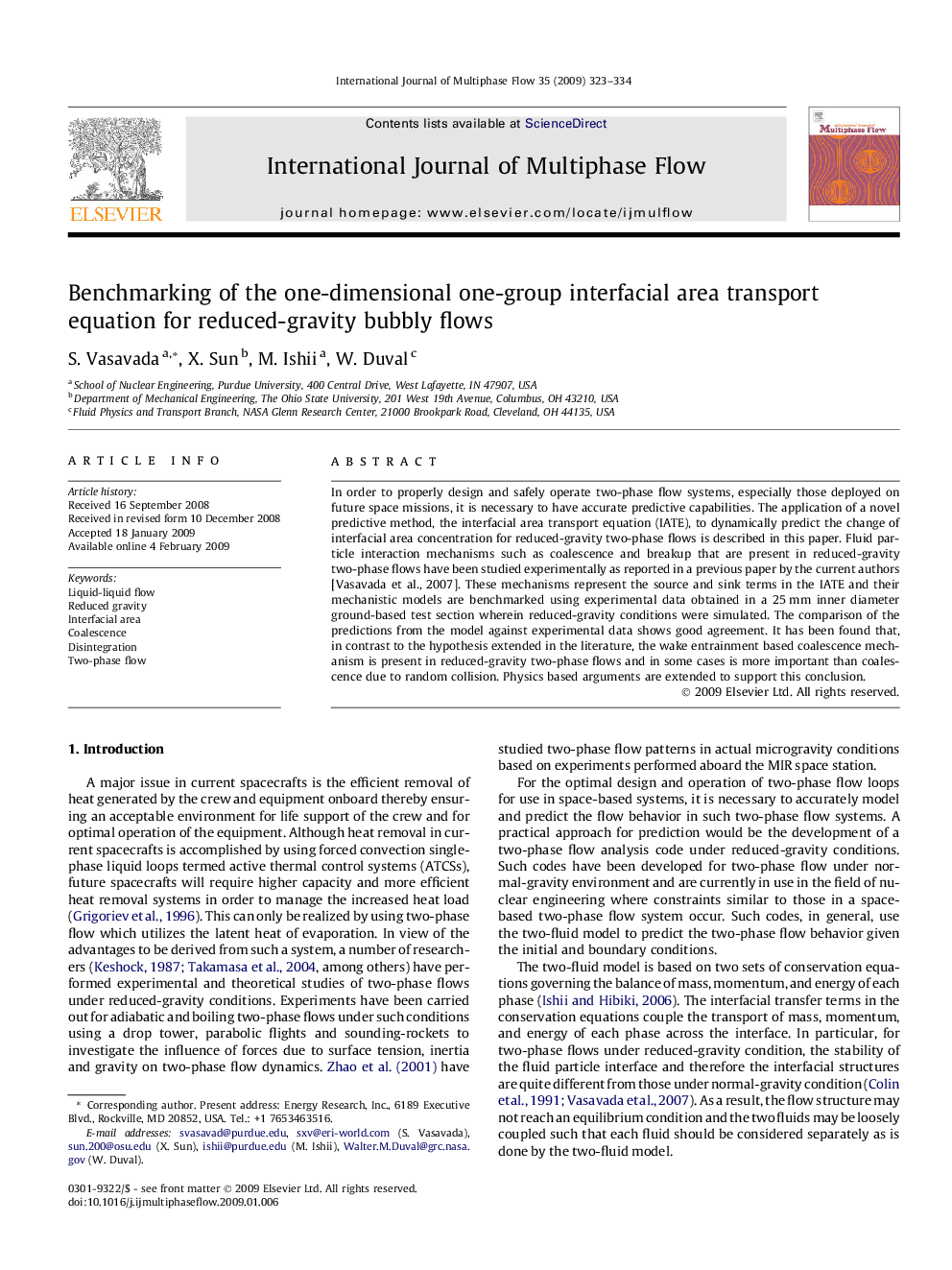| Article ID | Journal | Published Year | Pages | File Type |
|---|---|---|---|---|
| 666926 | International Journal of Multiphase Flow | 2009 | 12 Pages |
Abstract
In order to properly design and safely operate two-phase flow systems, especially those deployed on future space missions, it is necessary to have accurate predictive capabilities. The application of a novel predictive method, the interfacial area transport equation (IATE), to dynamically predict the change of interfacial area concentration for reduced-gravity two-phase flows is described in this paper. Fluid particle interaction mechanisms such as coalescence and breakup that are present in reduced-gravity two-phase flows have been studied experimentally as reported in a previous paper by the current authors [Vasavada et al., 2007]. These mechanisms represent the source and sink terms in the IATE and their mechanistic models are benchmarked using experimental data obtained in a 25Â mm inner diameter ground-based test section wherein reduced-gravity conditions were simulated. The comparison of the predictions from the model against experimental data shows good agreement. It has been found that, in contrast to the hypothesis extended in the literature, the wake entrainment based coalescence mechanism is present in reduced-gravity two-phase flows and in some cases is more important than coalescence due to random collision. Physics based arguments are extended to support this conclusion.
Related Topics
Physical Sciences and Engineering
Chemical Engineering
Fluid Flow and Transfer Processes
Authors
S. Vasavada, X. Sun, M. Ishii, W. Duval,
